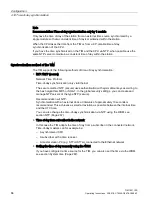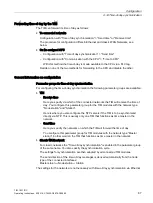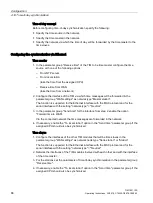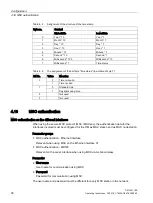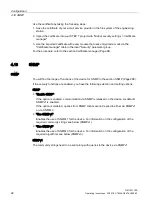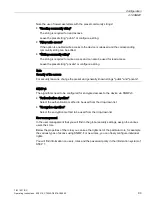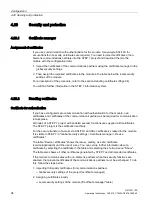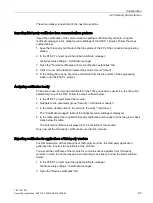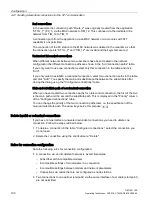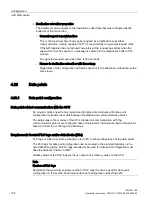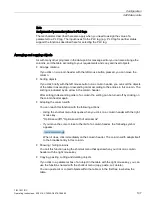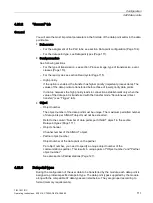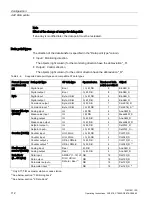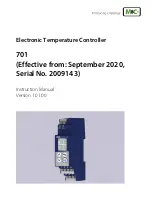
Configuration
4.20 Security and protection
TIM 1531 IRC
Operating Instructions, 02/2018, C79000-G8976-C468-02
97
You can configure the following access levels:
●
Full access (no protection)
The configuration and the blocks can be read and modified by anybody.
●
Read access
With this access level, without entering the password, only read access to the hardware
configuration and the blocks is possible; in other words, you cannot download the blocks
or hardware configuration to the TIM without entering the password. Without the
password, writing test functions and firmware updates are also not possible.
●
No access (complete protection)
If the module is completely protected, neither read nor write access to the hardware
configuration and blocks is possible.
If you want to use the functions of the unmarked access levels, you will need to enter a
password.
With the legitimization provided by using the password, you once again have full access to
the module.
Behavior of a password-protected module during operation
Protection of the module is effective after the settings have been loaded on the module.
Before an online function is executed, a check is made to establish whether or not it is
permitted. If there is password protection, you will be prompted to enter the password.
Example:
The module was configured for read access and you want to use the "Modify tags" function.
Since this is write access, the configured password must be entered before the function can
be executed.
The functions protected by the password can only be executed by one PG/PC at any one
time. Another PG/PC cannot log on.
The access rights to the protected data apply for the duration of the online connection or until
the access rights are canceled again with "Online > Delete access rights".
Each access level allows unrestricted access to certain functions even without entering a
password, for example identification using the "Accessible devices" function.
4.20.4
Configuring access protection
Configuration
You can enter several passwords setting up different access rights for different user groups.
The passwords are entered in the table so that precisely one access level is assigned to
each password.
The "Access level" column shows how the password takes effect.




